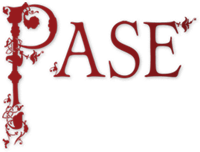Table of Contents
Top of page
Name
Summary
Distribution Map
Property List
Bibliography
Bottom of page
Godhild 3
Godhild ‘of Horton Kirby’ (Kent)
Male
CPL
4 of 5
Summary
Godhild 3 was a minor landowner of thegnly rank with two manors in west Kent assessed at 3 sulungs and worth £8. She was commended both to the king and to the magnate Beorhtsige Cild.Distribution map of property and lordships associated with this name in DB
List of property and lordships associated with this name in DB
Holder 1066
| Shire | Phil. ref. | Vill | DB Spelling | Holder 1066 | Lord 1066 | Tenant-in-Chief 1086 | 1086 Subtenant | Fiscal Value | 1066 Value | 1086 Value | Conf. | Show on Map |
|---|---|---|---|---|---|---|---|---|---|---|---|---|
| Kent | 5,18 | Horton Kirby | Godel | Godhild 'of Horton Kirby' | Beorhtsige | Odo, bishop of Bayeux | Ansketil de Rots | 2.00 | 4.00 | 6.00 | C | Map |
| Kent | 5,98 | Wateringbury | Godil | Godhild 'of Horton Kirby' | Edward, king | Odo, bishop of Bayeux | Hugh de Bréboeuf | 4.00 | 4.00 | 5.00 | C | Map |
| Totals | ||||||||||||
Bibliography
The names which DB spells Godil and Godel have been treated hitherto as standing for different names (von Feilitzen 1937: 263, 264–5). Given the proximity of the two Kentish estates where they occur, there are better grounds for regarding them as variants of the name Godhild. Both manors passed to Bishop Odo after the Conquest, but because his extensive fief in Kent was geographically based, that does not help to confirm the identity of their pre-Conquest holder.
One of the two manors was at Horton Kirby in the Darent valley among the foothills of the North Downs, one of a chain of vills which lay athwart the narrow valley, reaching up on the Downs to east and west. There were three manors in the vill TRE, merged in the hands of Bishop Odo and his subtenant Ansketil de Ros after the Conquest, though DB mysteriously says that ‘These 4 manors are now [held] as one manor’ (Kent 5:18), the number 4 (.iiii.) presumably a slip for 3. Godhild’s manor included 1 sulung and 3 ploughlands in a vill of 2½ sulungs and 7 ploughlands, but seems short of resources, at any rate in 1086, when it had the smallest meadows and woods of the three. It did, however, include the church. The three manors were held from different lords, Godhild’s from a Beorhtsige who was clearly the magnate Beorhtsige Cild (Beorhtsige 23), holder of large estates in west Kent and beyond. Godhild was specifically said to have power of alienation over her manor, and the preposition linking her to Beorhtsige (Godel de Brixi tenuit) almost certainly indicates commendation rather than dependent tenure.
Some 14 miles south-east of Horton, Godhild had half the vill of Wateringbury, on the northern fringes of the Weald; it had arable for four ploughs but modest amounts of meadow and woodland and a mill that rendered only 16d. Wateringbury church was in the other manor (Kent 5:97). The attachment of the church, and what is known of later manorial descents, suggest that Godhild’s holding comprised the western part of the vill, that is, the later manors of Westbery or Westburies and Cannons Court, situated in a separate ‘borough’ (tithing) (Hasted 1797–1801: V, 107, 113–14).
Godhild held Wateringbury from King Edward, leaving a residual possibility that she was not the same person as the holder of Horton Kirby, though it was certainly possible to be commended both to the king and to another lord.
Horton lay only 20 miles across the Thames from the cluster of manors in Essex assigned to Godhild 2. Although a relatively small estate divided between Kent and Essex is not inconceivable, we are more likely dealing with two different women, a probability reinforced by the way their names are spelled in DB: Godil/Godel in Kent and Gotild/Gotil in Essex. Besides, Godhild of Essex’s Norman successor Hamon held land in Kent as sheriff but did not acquire the property of the Kentish Godhild, as might have been expected had they been the same woman.
